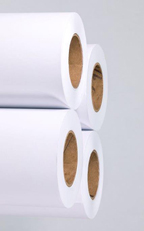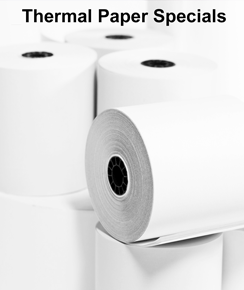Shelf Life and Paper Storage Recommendations for Thermal Paper
 Thermal paper rolls are a must have for many businesses today. However, many business owners don’t realize that thermal paper is different than traditional printer paper. As a result, there are certain storage and shelf life considerations that must be made. If these recommendations are not followed, business owners may find their thermal paper is unusable when they finally pull it off the shelf.
Thermal paper rolls are a must have for many businesses today. However, many business owners don’t realize that thermal paper is different than traditional printer paper. As a result, there are certain storage and shelf life considerations that must be made. If these recommendations are not followed, business owners may find their thermal paper is unusable when they finally pull it off the shelf.
Regardless of if you are using the paper for OCE wide format printers, or another type, knowing how to store the necessary supplies is a must.
Shelf Life
Storing thermal products requires you to make a few special concessions. For example, they need to be kept in dark areas and in a place that has a relative humidity of 45 to 65 percent. The temperature should be kept below 77 degrees Fahrenheit. In most cases, if you can maintain these temperature and humidity requirements, you can expect a satisfactory performance from your thermal paper roll for approximately three years after it has been manufactured.
Image Life
After you have printed on the thermal paper, it is expected that the image is going to remain legible for a period of at least seven years. This is with the assumption that the document is stored properly and that the above temperature and humidity specifications are maintained.
Fade Resistance
The majority of thermal products utilize co-reactant and dye technology to create the image or text. The combination is sensitive to UV light and may suffer from some image decline if it is continually exposed to office light or sunlight. The stability of the image created is going to depend on the original image developed, the intensity of UV light present, and the individual product design. If the paper is exposed to UV light for a prolonged period of time, sheet discoloration may also occur.
Contact Storage
It is highly recommended that the thermal paper not be exposed to the following materials for best results:
-
Any type of organic solvent (ethers, esters, ketones, alcohol)
-
Cleaning fluids
-
Plasticizers
-
Petroleum solvents
-
Carbon papers
-
Wet-type diazo copy paper
-
Cast coated papers
-
Water
-
Certain oils
-
Ammonia
-
Carbonless paper solvents
-
Other thermal systems
An exception to these general guidelines would be any type of thermal paper that has been specially coated.
The majority of thermal papers, regardless of who manufactured to them, are susceptible to damage from the items listed here. The bottom line is that if you don’t store your thermal paper properly, or if you don’t keep it in the right conditions, issues may arise. The best way to minimize problems is by ensuring the thermal paper is stored properly and that it doesn’t come in contact with any of the items mentioned above.


